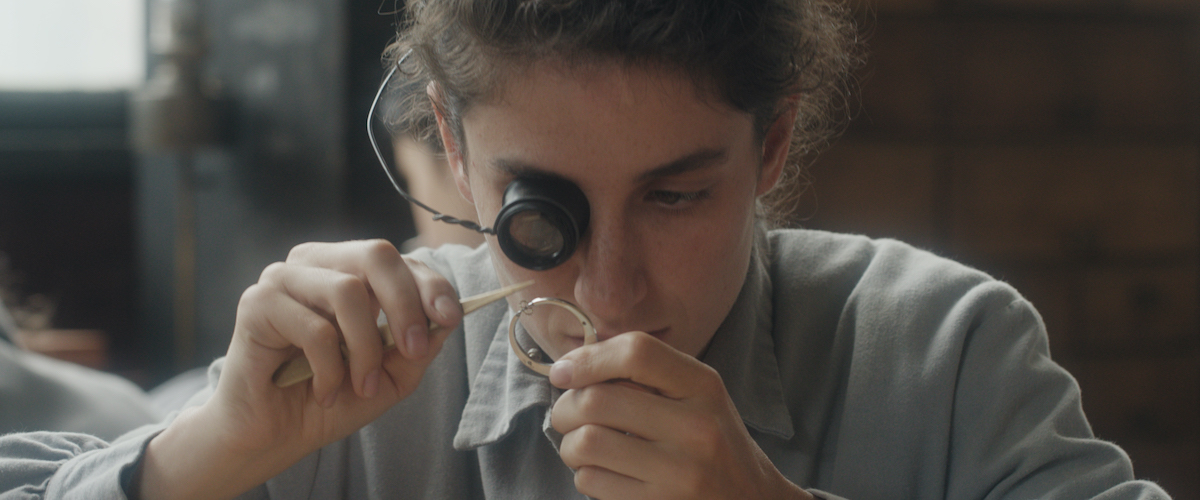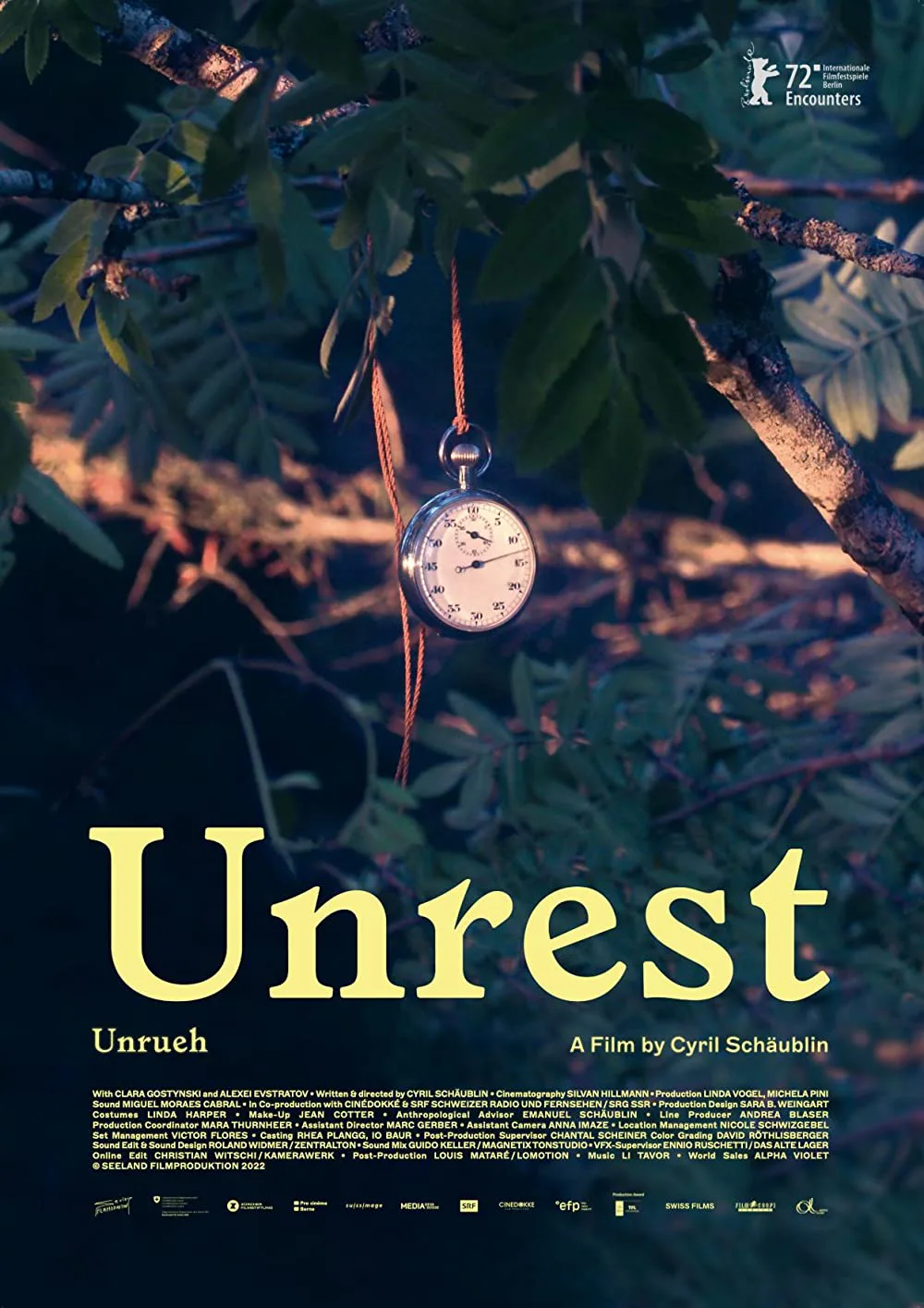Cyril Schäublin’s “Unrest” is set in another time made for our time. With the present-day resurgence of interest in unions, collective action, and mutual aid, a look back at the then-emerging school of thought that put the well-being of workers and everyday people over the wills of factory owners and corrupt officials feels right on time. Unfortunately, like a watch with ill-fitting parts, not all of the film’s creative choices work together seamlessly. “Unrest” is an intriguing period piece but a flawed curio that never quite achieves its soul-stirring goals.
In spirit, “Unrest” is an observational film with Schäublin’s camera watching revolutionary ideas exchanged in whispers and polite conversations. Set in the Swiss Jura mountains during the late 1800s, the movie focuses on the experiences of two main characters: Josephine (Clara Gostynski), a Swiss watch factory worker, and Pyotr Kropotkin (Alexei Evstratov), a Russian geographer inspired by the burgeoning anarchist movement in the region. Together, they witness the absurdity of how some watch factory owners treat their employees. They are shortchanged health insurance, micromanaged by the second in the name of productivity, and showing up a few minutes late costs an hour’s worth of pay. Failing to pay municipal taxes can disenfranchise men of voting age, keep them out of community spaces, or potentially land struggling people in jail. They’re among the many indignities that demoralize and exhaust the locals.
Conversely, there’s the grassroots movement of workers helping other workers, egalitarian-minded folk who vote to send relief abroad and raise funds for other communities. Their sense of duty extends beyond their backyard, which is more than what the local upper crust can say when agonizing over lining their pockets. Ultimately, history answers the question Pyotr’s cousin asks at the film’s start, “What will win? Anarchism or nationalism?” but the movie argues that it’s a question worth revisiting.
While philosophically engaging, Schäublin’s “Unrest” is so mild-mannered our protagonists are merely witnesses to what’s happening around them. Rarely are they the impetus of any action, making for a very stiff portrait of the time. Even the pair’s companionship—I hesitate to call it a romance—feels staid. Although the Valley of St. Imier is described as “the capital of the international anarchist rotation circle,” the action is subdued, mostly ideas exchanged in conversation and sometimes with disputes settled with a tidy vote. At times, the discussions is too simplistic, especially given the radical roots of breaking from the more mainstream socialist party for its own anti-authoritarian ideals embedded in the underlying politics. They were fighting against the seeds of nationalism that would, generations later, lead Europe to one Great War after another. “Unrest” is too genteel for this kind of clash of ideas.
But perhaps the most noticeable misstep lies in the film’s visual approach, or as I wrote in my notes: “distance, distance, distance.” Schäublin, who wrote and directed the film, and cinematographer Silvan Hillmann shot a considerable amount of “Unrest” from quite a distance. For instance, when we meet Josephine and Pyotr, they take up less than 1/8 of the screen. Other times, they appear even further, swallowed by a green valley or factory floor. This happens so often that it erects a barrier between the audience and the characters.
I felt less of a connection to the characters’ experiences as it was happening to them, as if I was an observer’s observer. As if the distance weren’t enough, the filmmakers often shoot these characters using only the bottom third of the screen, burying them underneath the waves of subtitles between the film’s three languages: Swiss-German, French, and Russian. Now it really felt like I was eavesdropping on a history class, as all the beautiful period detail and naturally sunlit characters disappeared for almost entire conversations behind the white text.
Although carefully researched and crafted, “Unrest” accidentally becomes a lesson on the importance of all of a film’s elements working together. The film’s ideas are not boring but when presented in such a dispassionate way, it loses the audience the way a professor loses their class when lecturing monotonously. All the pains taken to get the location, production, and costume details to evoke 19th-century Switzerland evaporate when filmed in such a way that distances viewers or hides all the work behind subtitles. While some scenes are alluring to watch, “Unrest” fails to keep up with its own ambitions.
In limited release today.




















